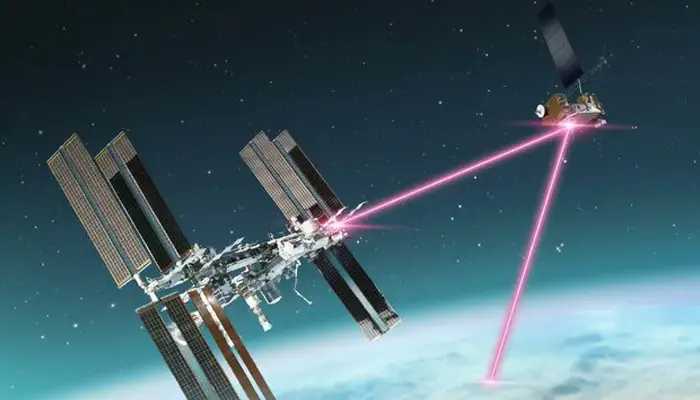Capturing the Cosmos: The Technology behind NASA's Revolutionary 4K Video Streaming from Aircraft to Space Station
- Admin
- 1 year ago
- 4 minutes read

Say goodbye to those hazy images of astronauts as NASA brings cutting-edge 4K technology through LASER.
Data, the indispensable element of modern society and science, need faster transmission and visualization, especially in space exploration research. With numerous missions coming up in near future, enhanced data transmission and improved visual quality have been a primary interest for scientists. In this article, we will delve into the revolutionary technology used by NASA for 4K video streaming from aircraft to International Space Station (ISS).
NASA's Revolutionary 4K Streaming:
With an ambitious goal of creating high-definition image and video of space, NASA did something extraordinary! NASA scientists at Glenn Research Center in Cleveland “streamed 4K video footage from an aircraft to the International Space Station and back for the first time using optical, or laser, communications,” as mentioned in the website.

(Credit - @actutechreddit X handle)
Why it's a Revolutionary Step
Previously, the scientists were dependent on radio waves only to send information to the space and receive the same. For this revolutionary technology, LASER communication was established via “infrared light, capable of transmitting 10 to 100 times more data at much faster speeds” than conventional radio signals.
The Unique Technology:
The mission involved the Air Force Research Laboratory and NASA’s Small Business Innovation Research program.
The space engineers “installed a portable LASER terminal on a Pilatus PC-12 aircraft, which flew over Lake Erie, transmitting data to an optical ground station in Cleveland.”
The collected data was then sent via an “Earth-based network” to NASA’s White Sands Test Facility (WSTF), located in New Mexico. Later on, this data was converted into infrared light signals for analysis.
Imagine turning on the local news to watch live 4K video footage of the first woman and first person of color walking on the Moon. Researchers at Glenn are conducting specialized aeronautics testing over Northeast Ohio to turn that dream into a reality: https://t.co/CRhzpRgOMf pic.twitter.com/FwCdeVVhoo
— NASA's Glenn Research Center (@NASAglenn) July 24, 2024
(Credit - @NASAglenn X handle)
Explaining the technology, NASA wrote in the website: “The signals traveled 22,000 miles away from Earth to NASA’s Laser Communications Relay Demonstration (LCRD), an orbiting experimental platform. The LCRD then relayed the signals to the ILLUMA-T (Integrated LCRD LEO User Modem and Amplifier Terminal) payload mounted on the orbiting laboratory, which then sent data back to Earth. During the experiments, High-Rate Delay Tolerant Networking (HDTN), a new system developed at Glenn, helped the signal penetrate cloud coverage more effectively.”
Wide-ranging Possibilities:
Dr. Daniel Raible, principal investigator of the HDTN project shared future prospects: “We can now build upon the success of streaming 4K HD videos to and from the space station to provide future capabilities, like HD videoconferencing, for our Artemis astronauts.”
Meanwhile, this project is part of NASA’s ambitious aim of live streaming high-bandwidth video and data transmission from deep space.
“Teams at Glenn ensure new ideas are not stuck in a lab, but
actually flown in the relevant environment to ensure this technology can be matured to improve the lives of all of us,” said chief of aircraft operations, James Demers.
One step closer to flight!
— NASA (@NASA) July 18, 2024
Teams have successfully rolled out the core stage of the @NASA_SLS rocket for the #Artemis II mission. The core stage will travel 900 miles from NASA's Michoud Assembly Facility to @NASAKennedy, where it will prepare for its next destination: the Moon! pic.twitter.com/lWioKFHol1
(Credit - @NASA X handle)
About Artemis Mission:
Artemis 1 was launched as non-crewed test flight in 2022. Artemis 2 will carry humans to the moon, for the first time since 1972. NASA has a plan to carry first female astronaut to the moon surface via Artemis 3 mission. Meanwhile, NASA is preparing for other two Artemis mission in future.
Now, the world will experience 4K video streaming of astronaut landing on the moon through Artemis mission.



.WEBP)








